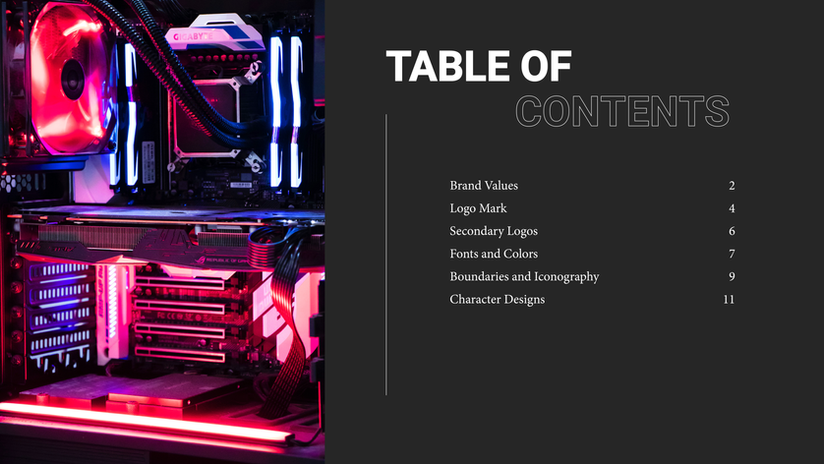The
Idea
This rebrand started as a semester-long project to save a dying brand of our choice. GameStop quickly came to mind for me due to being in the news for the past couple of years. From becoming a Reddit meme stock to joining the NFT market, GameStop has struggled to stay relevant and present in the gaming industry, so it seemed like a good challenge that I was ready to take on.
I was tasked to rebrand Gamestop through three phases: foundation, expression, and experience for my branding class. I knew that I would need to start from the ground up for this project. This caused me to research unique solutions for GameStops' problem of staying relevant in the digital world of gaming. I recommend GameStop stray away from being a brick-and-mortar store to an experiential location that encourages consumers to return again and again.

The Initial Rebrand
Research
Before I could do anything design related, I started with two weeks dedicated to research and auditing GameStop as a brand. This research included the history of GameStop, brand mission and values, and competitor analysis. At the same time in my personal life, I was researching gamification and the Bartle Test. I was excited to see how GameStop and gamification seemed to overlap well. This led me to a unique design approach.
Initial Design
The initial design started with just the main logo set. I wanted to simplify the design so the logo could adapt and be a strong foundation for any changes later in the project. This design took a muted version of the original red to be more appealing on modern monitors. This logo also changed the ‘O’ to a filled-in dot. This circle will be a space to explore the GameStop brand through secondary icons.
The Process
Design
After the initial design process was approved, I quickly worked on expanding the brand to something exciting and dynamic. This was when I added gamification to the brand by creating four player types inspired by the Bartle Test. I used Adobe Illustrator, Photoshop, After Effects, and Procreate to complete my final deliverables. The initial designs came with a brand guidelines booklet created to ensure that everything was consistent and uniform in this design step.
Audit and Strategy
Throughout the entire project, I made sure that my research applied to every thought and deliverable, creating a dynamic brand that changed its presentation to match each player. This also allowed me to create a formal company audit with creative proposals to expand the brand. For example, I recommended changing the brick-and-mortar store experience to a gaming lounge location with this audit. Pulling together everything that I created, I was able to develop a case study booklet.

Overall, GameStop needs to shift from a brick-and-mortar store to an experiential gaming lounge.
This will change the brand experience for consumers and keep the company alive for many years to come.
GameStop needs to change its company values towards being experimental and innovative. By setting the industry standards and being unique, GameStop can stop trying to compete with its competitors. Instead, their competitors will compete to catch up with GameStop. This means that the brand will need an entire rebrand from the ground up.






























